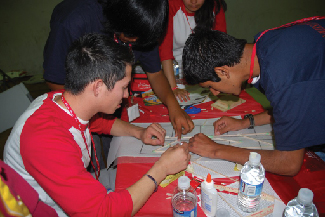59 Cognitive Development
More complex thinking abilities emerge during adolescence. Some researchers suggest this is due to increases in processing speed and efficiency rather than as the result of an increase in mental capacity—in other words, due to improvements in existing skills rather than development of new ones (Bjorkland, 1987; Case, 1985). During adolescence, teenagers move beyond concrete thinking and become capable of abstract thought. Recall that Piaget refers to this stage as formal operational thought. Teen thinking is also characterized by the ability to consider multiple points of view, imagine hypothetical situations, debate ideas and opinions (e.g., politics, religion, and justice), and form new ideas. In addition, it’s not uncommon for adolescents to question authority or challenge established societal norms.
Early in adolescence, changes in the brain’s dopaminergic system contribute to increases in adolescents’ sensation-seeking and reward motivation. Later in adolescence, the brain’s cognitive control centers in the prefrontal cortex develop, increasing adolescents’ self-regulation and future orientation. The difference in timing of the development of these different regions of the brain contributes to more risk taking during middle adolescence because adolescents are motivated to seek thrills that sometimes come from risky behavior, such as reckless driving, smoking, or drinking, and have not yet developed the cognitive control to resist impulses or focus equally on the potential risks (Steinberg, 2008[1]). One of the world’s leading experts on adolescent development, Laurence Steinberg, likens this to engaging a powerful engine before the braking system is in place. The result is that adolescents are more prone to risky behaviors than are children or adults.
Cognitive empathy, also known as theory-of-mind (which we discussed earlier with regard to egocentrism), relates to the ability to take the perspective of others and feel concern for others (Shamay-Tsoory, Tomer, & Aharon-Peretz, 2005). Cognitive empathy begins to increase in adolescence and is an important component of social problem solving and conflict avoidance. According to one longitudinal study, levels of cognitive empathy begin rising in girls around 13 years old, and around 15 years old in boys (Van der Graaff et al., 2013). Teens who reported having supportive fathers with whom they could discuss their worries were found to be better able to take the perspective of others (Miklikowska, Duriez, & Soenens, 2011).

- Steinberg, L. (2013). Adolescence (10th ed.). New York, NY: McGraw-Hill. ↵

